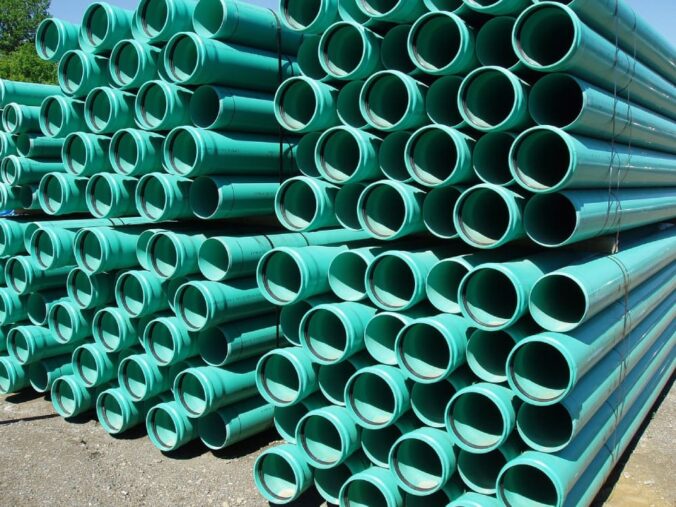Overview
Plastic extrusion is the process of melting plastic and shaping it into a continuous profile. The process begins by heating raw plastic material to the point where it becomes viscous and flowable. The heated plastic is forced through a die, which is a tool that shapes the plastic. The plastic solidifies and takes on the shape of the die as it exits the die.
Plastic extrusion is a versatile and cost-effective manufacturing process that is widely used in industries like automotive, construction, consumer goods, and packaging. It enables manufacturers to produce highly precise and repeatable plastic parts and products. It can be used to create items of various shapes, sizes, and materials.
Visit here to contact the leading UK manufacturers that can provide you with advice and quotes for your plastic extrusion project.
What are the Different Types of Plastic Extrusion?
There are several different plastic extrusion processes, including:
Blown Film Extrusion
Blown film extrusion creates thin plastic films for various applications such as packaging, construction, and agriculture. The plastic is melted and extruded through a circular die to form a tube. As the tube cools, air is blown into it, causing it to expand and become uniform in thickness. For storage or transportation, the tube is cut into desired lengths and rolled up. Single-layer extrusion, multi-layer extrusion, and co-extrusion are all blown film extrusion processes.
Sheet Extrusion
Sheet extrusion is used to create plastic sheets that can be used for a variety of applications, such as packaging and construction. The plastic material is fed into an extruder, where it is heated and melted. The molten plastic is then fed through a flat die, which shapes it into a flat sheet. The sheet can then be cooled by passing it through a set of cooling rollers, which solidify the plastic. The cooled sheet can then be cut to size and used for a variety of applications. The process is extremely adaptable, and it can be used to create sheets from a range of materials, including polypropylene, polyvinyl chloride (PVC), and polystyrene.
Film Extrusion
Film extrusion is used to create thin plastic films that can be used for packaging, such as bags and wraps. The plastic material is fed into an extruder, where it is heated and melted. The molten plastic is then fed through a thin die, which shapes it into a thin film. The film can then be cooled and wound onto a roll for storage and transport.
Profile Extrusion
Profile extrusion is used to create long, continuous shapes such as plastic pipes, tubes, and window frames. The process involves melting plastic pellets or granules and then forcing them through a die, which shapes the plastic into the desired profile. The profile can then be cooled and cut to length. This process is commonly used to create products such as PVC pipes and window frames.
What Materials are used for Plastic Extrusion?
Plastic extrusion can be performed using a variety of thermoplastic materials, including:
- Polyethylene (PE)
- Polyvinyl chloride (PVC)
- Polypropylene (PP)
- Polystyrene (PS)
- Acrylonitrile-butadiene-styrene (ABS)
- Polyethylene terephthalate (PET)
- And others
The selection of material depends on the desired properties of the final product and the processing conditions of the extrusion process.
What are the Advantages of Plastic Extrusion?
Plastic extrusion has several advantages over other manufacturing methods, including:
- Cost-effectiveness: Plastic extrusion is a cost-effective manufacturing method, requiring minimal labour and easy to automate.
- Versatility: Plastic extrusion can be used to create a wide variety of products, including pipes, tubes, sheets, and films.
- High-volume production: Plastic extrusion is a high-volume production process, allowing for the creation of large quantities of products quickly and efficiently.
- Customisability: The process is highly customisable, with the ability to adjust the size, shape and properties of the final product.
- Material flexibility: Plastic extrusion can be used with a wide variety of plastic materials, including PVC, polyethylene, polypropylene and ABS.
- Strong and durable: The products made by plastic extrusion are strong and durable, making them suitable for a wide range of applications.
What are the Disadvantages of Plastic Extrusion?
- Limited design capabilities: The design capabilities of plastic extrusion are limited, making it difficult to create complex or detailed shapes.
- Risk of product defects: The extrusion process can be prone to product defects, such as surface imperfections or internal voids.
- Limited material options: While plastic extrusion can be used with a wide variety of plastic materials, it may not be suitable for certain materials or applications.
- Scrap material: The process generates scrap material that can’t be used again, which can add to the environmental impact.
- Quality control: Quality control can be a challenge in plastic extrusion, as it can be difficult to ensure consistency in the finished product.
How Can I Contact the Leading Plastic Extrusion Companies in the UK & Ireland?
Click here to visit the PlastikCity website, where you can contact the leading plastic extrusion companies in the UK and Ireland for advice, assistance or a quote for your extrusion project, free of charge.

